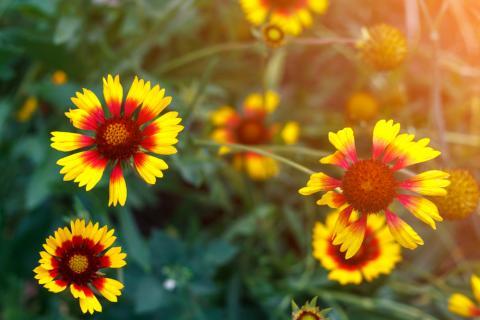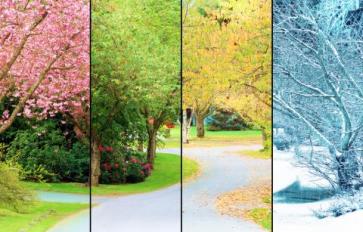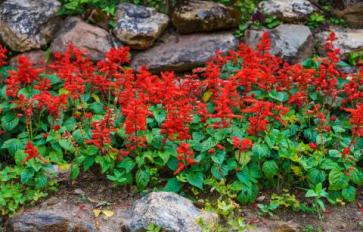
Helenium is a member of the family Asteraceae or Aster family of the genus Helenium L. commonly known as sneezeweed P. and contains twenty-one species. The plant is native to the eastern United States and is commonly found along roadsides and in parking lots. It blooms from late summer through early autumn and adds to a wildflower landscape. It is not a cause of allergies like other plants but has been used medicinally to cause sneezing which is said to loosen congestion. The Menominee tribe whose territory was in the current state of Wisconsin called it “aiatci'a ni'tcikun. The name helenium was to honor a royal queen and was called Helen’s Flower, the namesake of Helen of Troy. This perennial flower grows wild in Eastern bogs and into Canada. Helenium attracts bees and butterflies and can be found today in many regions of the United States.
Helenium grows to a height from three to five feet tall and spreads up to two feet. It produces blooms in shades of red, orange, gold, and brown that face outward from the center of the cone. They form a ray shape or may droop downward. The foliage is shaped like a lance off sturdy, stiff stems that grow upright. They are a hardy plant that does well in zones three to eight that includes temperate and sub-arctic climates.
Growing Helenium in the Garden
Helenium plants do well when started from seed or they can be planted from started plants. They should be planted in areas that receive full sunlight about six hours per day and they will tolerate the afternoon shade. Helenium plants like slightly acidic soil that drains well and where they will have moist conditions; to help, it is advisable to use a three inch layer of organic mulch. Deadhead fading blooms will encourage new growth and the plant only needs to be fertilized in the spring. Once the flowers fade in autumn cut the stalks down to the foliage and every three years divide the plants either in the spring or the fall to maintain healthy growth. The best method to grow helenium is by dividing the plant in early spring. To do this, dig up the root ball and split it, then replant the swaths where fall colors will be needed. Once in bud the plant will bloom for approximately ten weeks. The plant does not pollinate through the air and relies upon pollinators like honeybees for pollination.
The plant is poisonous to horses, cattle, and dogs, though the grazing animals tend to avoid it due to its bitter flavor. However, it is advisable to clear the property of the plant and keep dogs away from a garden where helenium is included in the landscape. Honey produced from helenium can have a bitter taste.
Decorating with Helenium
Helenium can be grown in wildflower or cottage gardens planted with other late blooming plants. Helenium has a wild appearance and would not do well in a manicured landscape. They are an excellent cut flower that last long in the vase. The many varieties add a colorful accent to the late summer early fall garden. The Adios has purple-brown cones with down turned petals; the Beatrice petals are yellow with brown and yellow cones with upward blooms; the Red-Haired Katy is hued depending on the light shifting from crimson to copper. Other varieties include the Butterpat with pure yellow blooms and cones, the El Dorado growing a brown cone with lemon yellow petals, and the Waldtraut which is a long blooming plant with orange flowers flecked with gold.








